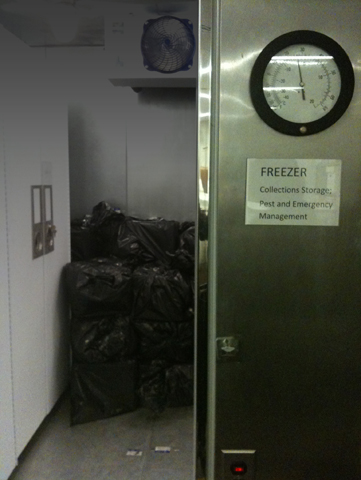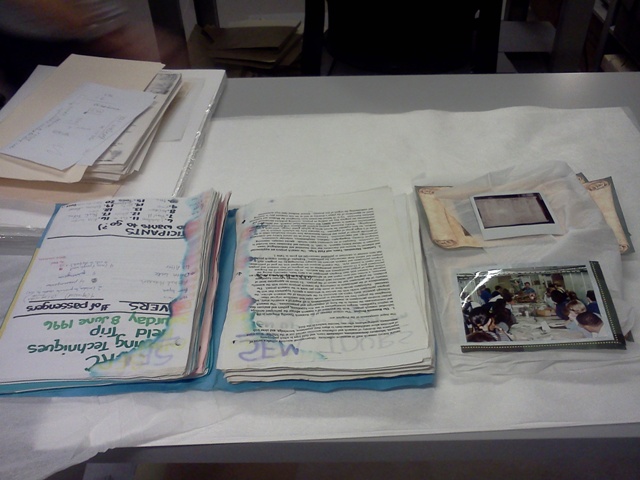In honor of the Heritage Preservation organization’s annual MayDay initiative to protect cultural heritage from disasters, the Archives will be highlighting how we deal with emergencies and how you can prepare yourself in a series of blog posts. Throughout the year, the Smithsonian Institution Archives reviews our plans for how we will deal with emergencies in Smithsonian collections. One of the most common emergencies both archives and individual paper-based collections (documents, diaries, books, photos, etc.) encounter is a wet environment caused by flooding—in fact, floods are the most common natural disaster in the US. In honor of May Day we wanted to blog about some drying techniques used for wet paper.  The tried and true salvage method for paper is air drying, but if you have a lot of documents, and only limited flat space to arrange them, this is not an efficient approach. Another method that will work is to freeze the materials as soon as possible, and then take them out of the freezer in small batches and air dry them. The downside to this arrangement is the length of time it will take to dry out a large quantity of materials, and the likelihood that documents will get out of order. The method the Archives most recently used was to vacuum freeze dry a collection of about thirty boxes that got wet when a sprinkler head was accidentally knocked off. First we collected the wet papers into plastic corrugated boxes, wrapped the boxes in plastic bags, and put them in our walk-in freezer at 20⁰F. A vendor arrived a few weeks later to load the boxes into a refrigerated truck, and to take them to a vacuum freeze dry facility. At the facility, the plastic bags were removed and the boxes with their contents were dried in-situ. When the contents returned to the Archives in about three weeks they were, as we expected, damaged but useable. The characteristic cockling of air-dryed papers was there, and so was the water-damaged inks, but there was no blocking (sticking together) of photographs or coated papers. So while the looks of the papers has changed, fortunately, the collection is ready for use.
The tried and true salvage method for paper is air drying, but if you have a lot of documents, and only limited flat space to arrange them, this is not an efficient approach. Another method that will work is to freeze the materials as soon as possible, and then take them out of the freezer in small batches and air dry them. The downside to this arrangement is the length of time it will take to dry out a large quantity of materials, and the likelihood that documents will get out of order. The method the Archives most recently used was to vacuum freeze dry a collection of about thirty boxes that got wet when a sprinkler head was accidentally knocked off. First we collected the wet papers into plastic corrugated boxes, wrapped the boxes in plastic bags, and put them in our walk-in freezer at 20⁰F. A vendor arrived a few weeks later to load the boxes into a refrigerated truck, and to take them to a vacuum freeze dry facility. At the facility, the plastic bags were removed and the boxes with their contents were dried in-situ. When the contents returned to the Archives in about three weeks they were, as we expected, damaged but useable. The characteristic cockling of air-dryed papers was there, and so was the water-damaged inks, but there was no blocking (sticking together) of photographs or coated papers. So while the looks of the papers has changed, fortunately, the collection is ready for use.  It’s an unfortunate fact that drying wet documents will never get the document to looking as good as new without extensive, expensive, and possibly invasive conservation treatments. This is why we place such an emphasis on prevention… because it is worth a pound of cure. To build your own disaster plan, consult the resources in this recent post.
It’s an unfortunate fact that drying wet documents will never get the document to looking as good as new without extensive, expensive, and possibly invasive conservation treatments. This is why we place such an emphasis on prevention… because it is worth a pound of cure. To build your own disaster plan, consult the resources in this recent post.
Produced by the Smithsonian Institution Archives. For copyright questions, please see the Terms of Use.

Leave a Comment